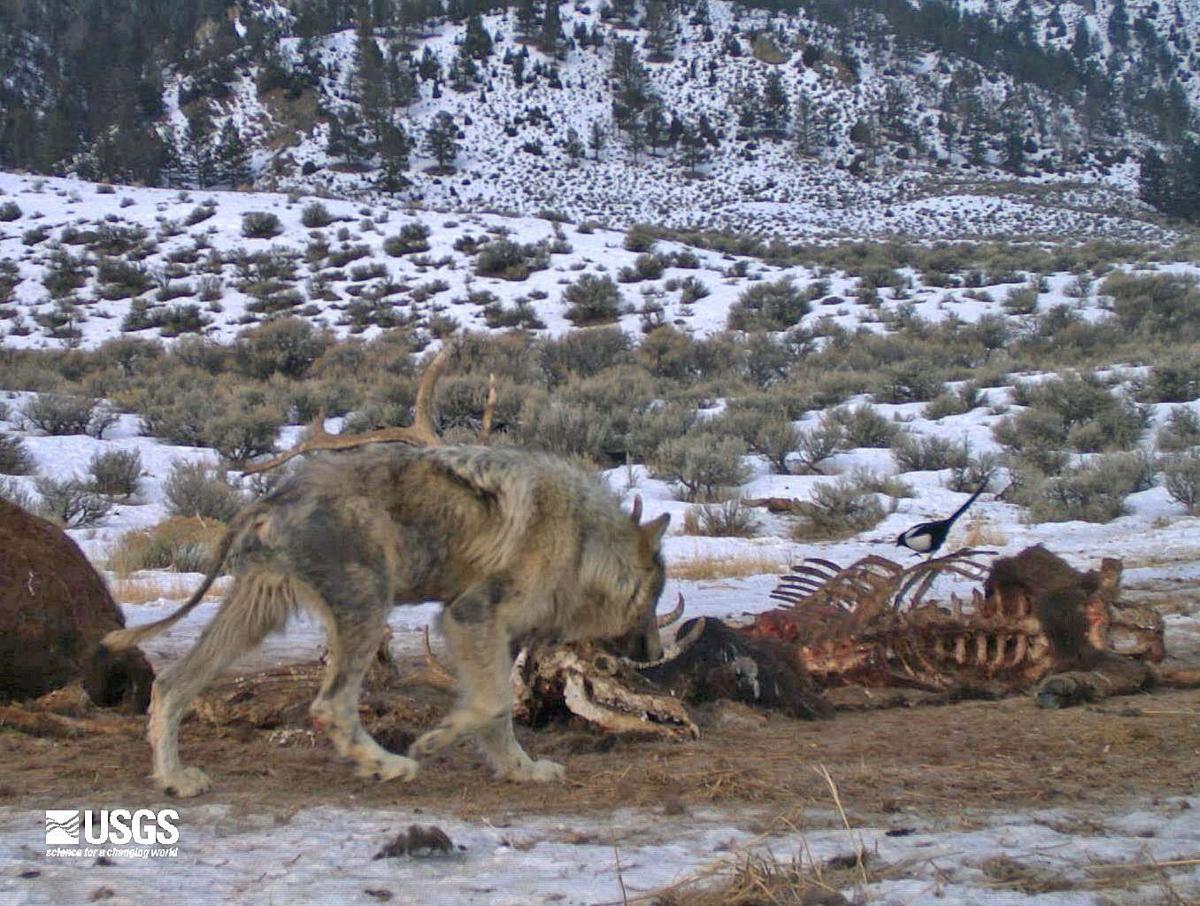In
Yellowstone National Park’s frigid winters, small mites can have a big
effect on the wolves they invade, altering the times they hunt, how many
calories they need to consume and how far they travel.
The findings were published in the March 28 edition of the scientific journal “Ecology.”
Ecologist Paul Cross, of the USGS Northern Rocky Mountain Science
Center in Bozeman, was the lead author of the study, which concludes six
years of research he has conducted on the topic of mange in wolves
using thermal imaging cameras.
“It’s
a very complicated paper, highly mathematical, but the gist of it is
that when wolves get mange they lose a lot of heat,” said Doug Smith,
wolf biologist for Yellowstone National Park.
Mangy mites
The
mites that cause mange burrow into their host’s skin to feed and lay
eggs, causing infections that lead to irritation. As the infected animal
repeatedly scratches its irritated skin, its fur falls out. This can be
dangerous in the winter when a wolf’s coat does not regrow. Fur loss
can be in small patches or as much as a third of the wolf’s body.
With less fur for insulation, a wolf has to modify its behavior.
“If heat is lost it needs to be replaced,” Cross explained. “The way to replace it in warm-blooded animals is to eat more.”
Using
images to capture the effects of mange on wolves, Cross calculated that
the disease could cost a wolf 60 to 80 percent of its daily caloric
budget. Normally, Yellowstone’s wolves burn about 4,000 to 6,000
calories a day while traveling on average 10 miles a day.
“That’s common to animals living in a cold climate,” he said.
Travel change
To
conserve energy, the mangy wolves tended to travel less in a day. The
animal with the worst infection did not travel at all during the night,
when it would have been colder. That’s contrary to healthy wolves which
travel more at night.
“Which is maybe what you would expect if it was trying to conserve heat,” Cross said.
The
study also found that although cold weather demands that an animal burn
more calories to stay warm, wind had an even more chilling effect.
Previous
studies by Cross have shown that wolves living in larger packs are
better at surviving the ill effects of mange, possibly because the larger packs can provide enough food to sustain the animals through a tough winter.
The
studies have also raised other questions that future research may be
able to answer. To feed that increased caloric need, will the infected
wolves try to kill more elk, their main food source? Or will they simply
stay on a carcass longer and eat it more completely?
One calculation in Cross’ study
showed that if eight out of 40 wolves (20 percent) had mange the
increase in caloric need would amount to the energy supplied from
consuming 12 additional cow elk each winter.
Trophic cascade
The
reintroduction of wolves to Yellowstone National Park in 1995-96 caused
a number of effects: elk numbers fell; with fewer elk, waterway
vegetation thickened; with more vegetation, beavers recolonized streams.
The
effects of a major predator, like wolves, created what’s called a
trophic cascade. But what happens when megafauna like wolves become the
prey of a much smaller predator, such as the mites that cause sarcoptic
mange? Future research might also reveal another trophic cascade with
mites as the top predators, Cross theorized. That won’t be an easy task.
“Simultaneous
to mange in the park the elk populations were declining, the climate is
changing, it’s hard to figure out how much anything is affecting each
factor because they are all moving,” Cross said.
Mange was introduced into the
Northern Rockies in the early 1900s by the Montana state wildlife
veterinarian in an attempt to help eradicate wolves and coyotes. The
disease persists in coyotes and foxes. After being reintroduced to
Yellowstone wolves were free of mange until 2007.
“It
is ironic that a parasite originally introduced to help eradicate
wolves may increase their effects upon prey populations a century later
and is potentially one more in a long list of unintended consequences in
wildlife management,” the “Ecology” paper stated.
Mange in pack
This
year, the park’s Lamar Canyon pack is the only one infected with mange
but all five of the adult wolves have the disease and it is believed to
have played a role in the death of all of the pack’s six pups, Smith
said.
“There are other complicating factors, but it wouldn’t be this bad without mange,” he added.
As
the Lamar Canyon pack comes into contact with nearby wolves, Smith now
wonders how long it will be before other packs are infected.
The most recent counts of Yellowstone’s wolves show there are 79 wolves in 10 packs, down from 99 wolves at the end of December.
“That’s
very typical,” Smith said, as wolves without collars move across the
landscape and disappear. Pups will be born in April, once again boosting
the park’s wolf population.
“The
message is they seem to have the same number of pups every year,” Smith
said. “The big question is how many live? Wolves die at a large rate so
you need to have good wolf production for the pack sizes to remain
stable.”
source
source



No comments:
Post a Comment